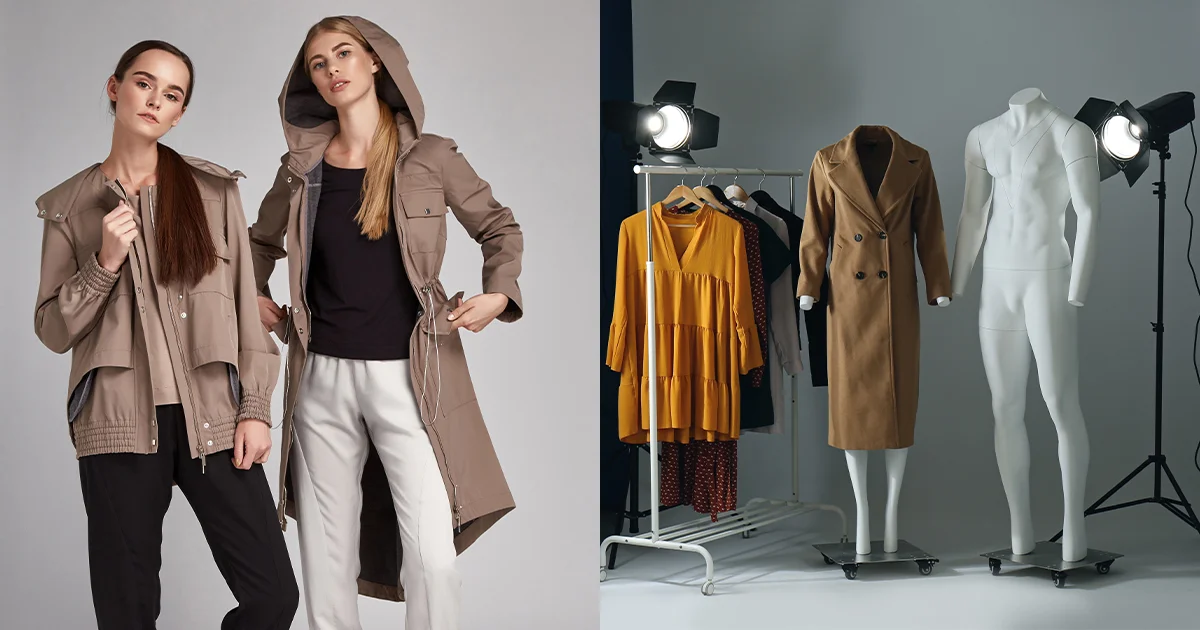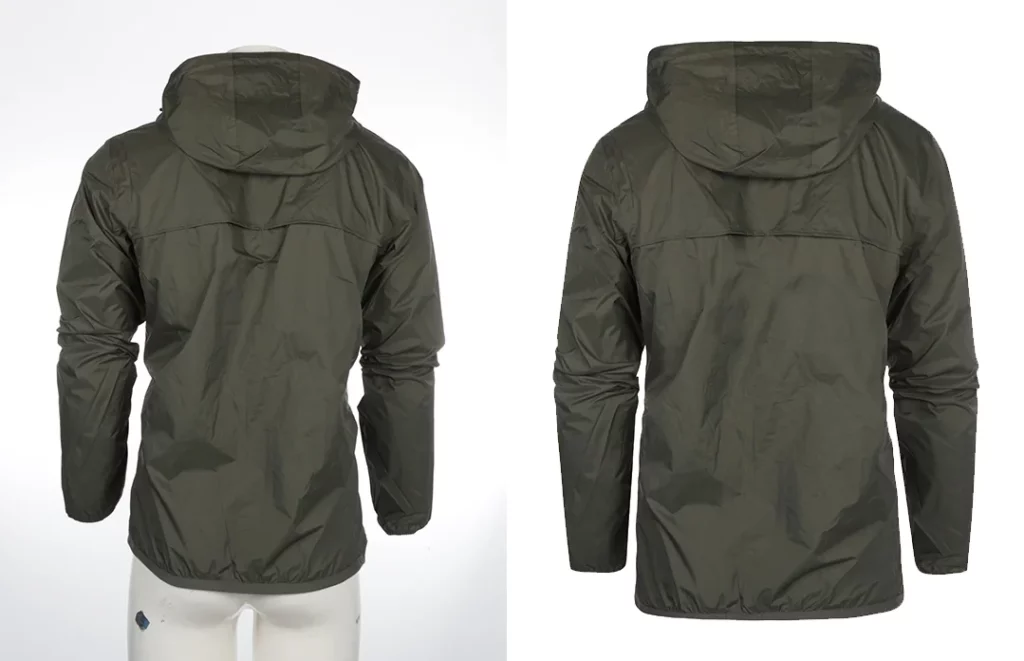If you’re a fashion brand looking to sell clothes online, you know how important it is to showcase your products in the best possible light. That’s why it’s crucial to take high-quality clothes photos that capture the details and appeal of your garments.
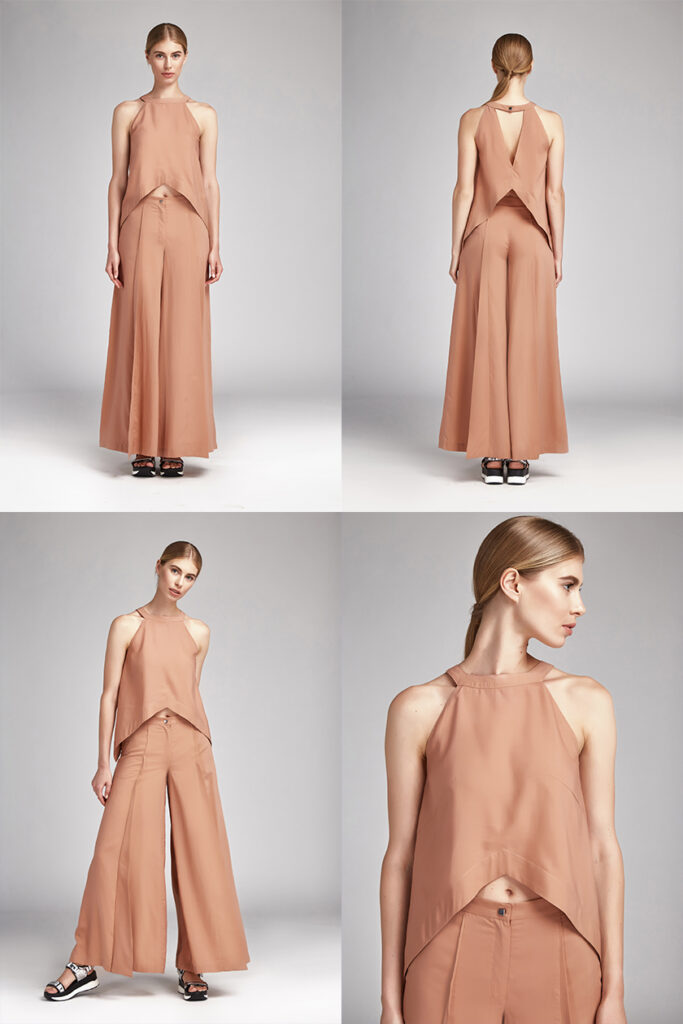
We’ll cover everything from shooting fashion products using model clothing photography, flat lay clothing photography, and mannequin photography to editing each type of photography in post-production.
How to Take Pictures of Clothes to Sell?
By following our expert tips and tricks, you’ll be able to take clothes photos that are sure to catch the eye of potential customers and boost your sales.
1. Make Sure Your Items Look Good
To ensure that your clothes photo are visually appealing when taking photos for fashion brands, you can use models, mannequins, or a flatlay technique. Each option can showcase your clothing items and give customers an idea of how they will look when worn or styled. Here’s when to use each method:
Models vs Mannequins vs Flatlay: When to use each
When it comes to clothing Photography, choosing the right approach for showcasing clothing is essential to capture the essence and style of the garment. The decision between using models or mannequins will depend on the brand’s objectives, budget, and target audience.
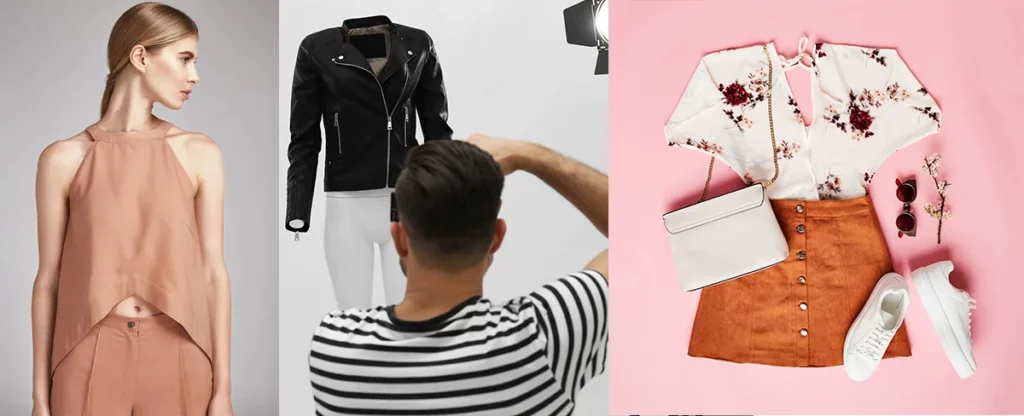
When to Use Models for Clothing Photography
Models can bring a sense of life and style to your clothing photos and provide customers with an idea of how the garment might look on a real person. They can also help create an emotional connection between the product and the potential customer, which is crucial in fashion marketing.
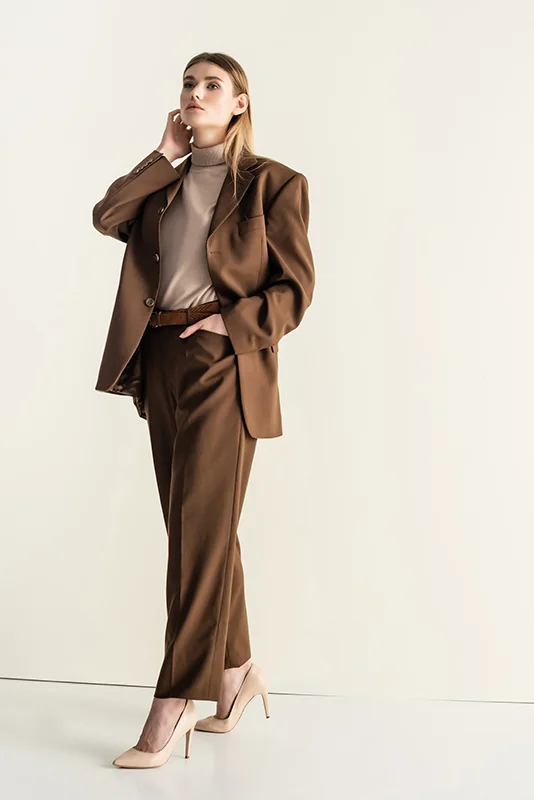
Therefore, if you’re aiming to showcase luxury products or brands, using models may be the best option. Expensive products need to be presented in a more stylish and sophisticated manner than other brands, and models can help to achieve this goal.
However, using models can be more expensive, time-consuming, and logistically challenging than using mannequins. It’s essential to consider your budget and the brand’s objectives before deciding to use models.
When to Use Mannequins for Clothing Photography
Using mannequins for clothing photography can draw attention to the garment or accessory being sold, without the distraction of a human model. By using a mannequin, you can highlight the product’s features, design, and fit without having a person in the photograph.
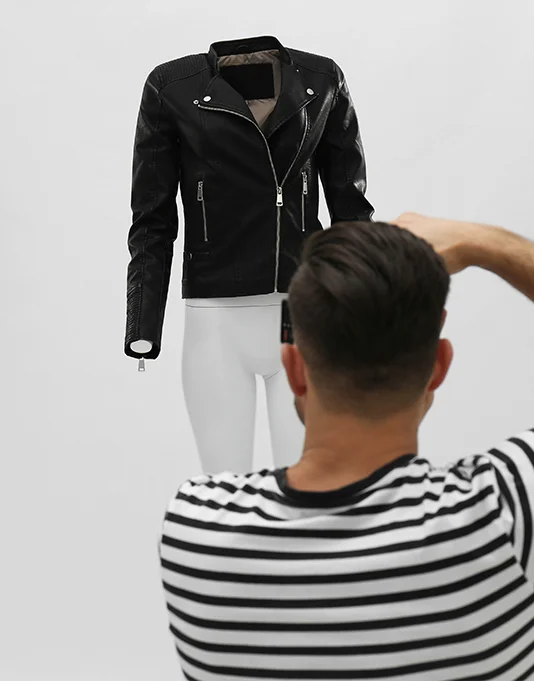
If you have a large inventory of products to photograph, using mannequins can help maintain consistency throughout your images. Mannequins provide a standard shape and size, ensuring that all products are photographed in the same way, which can be essential for online retailers with a wide range of products.
Using mannequins can save you time and money when compared to hiring models for every photoshoot. They also don’t require breaks, which can speed up the photoshoot process.
When to Do Flat Lay Clothing Photography
Flat lay clothing photography is a technique that involves laying out clothing items on a flat surface, such as a table or floor, and photographing them from above.
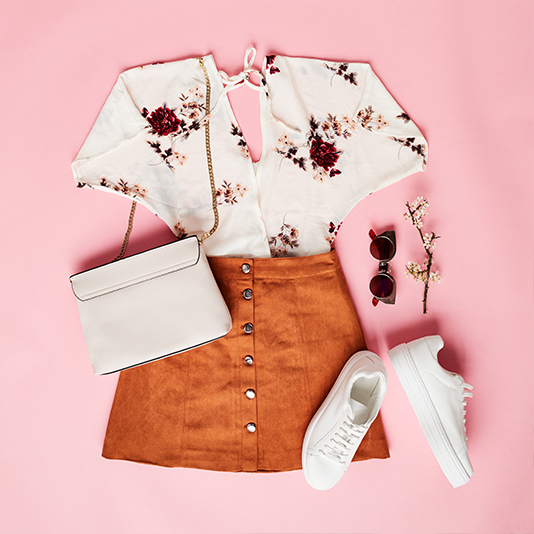
Flat lay photography allows you to show the details of each clothing item clearly, including patterns, textures, and small features that might be missed in other types of photography.
Flat lay photography can be used for a wide range of products, including accessories, shoes, and clothing items, making it a versatile option for fashion brands.
2. Choose A Shooting Style.
Choosing a shooting style involves selecting an approach or technique for taking photographs, taking into account various elements such as lighting, composition, and angle. This allows photographers to achieve a particular aesthetic or mood that reflects their creative vision and meets the needs of their audience.

A consistent shooting style can also help establish a recognizable brand or visual identity. Additionally, in clothing photography, it’s crucial to match the product’s color and texture with the images, and using a plain background can make the cloth stand out and make it easier to replace the background if necessary.
3. Select A clean Background Or Backdrop
Having an appropriate background for clothing photography is crucial because it can help to highlight the garment and make it stand out
A simple, unobtrusive background helps to keep the focus on the clothing. The background should not overpower the garment, but instead, provide a neutral and complementary setting that highlights the garment’s features.
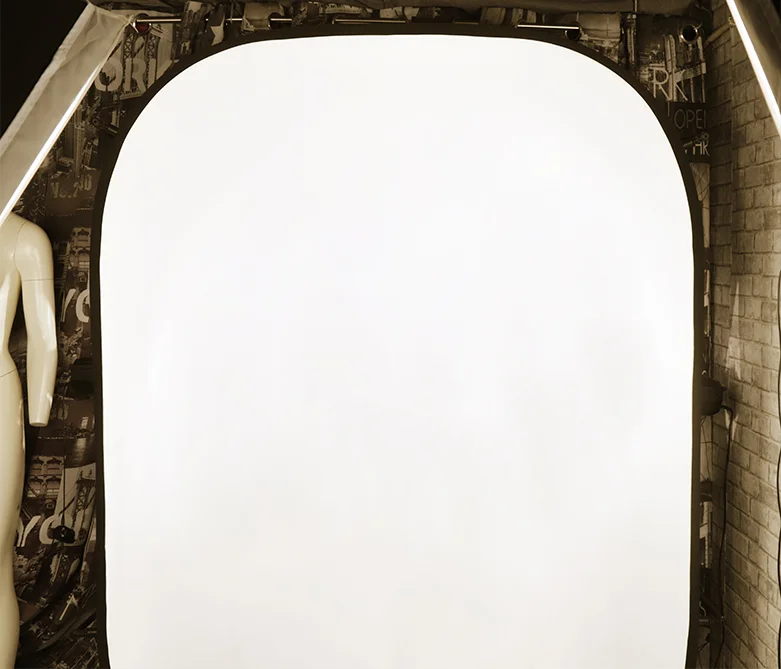
Having a good background can ultimately help to sell the clothes. By highlighting the garment’s features and creating an appealing visual experience, customers may be more likely to make a purchase.
Backdrop Screen
Using a backdrop screen can enhance the quality of your clothing pictures by making them more vivid and sharp. Whether you are photographing a cloth on a mannequin, hanger, or model, using a backdrop can help to create a professional and cohesive look for your images.
4. Fix Position of Light
To set up or fix lighting for clothing photography, use soft lighting to minimize harsh shadows and create an even illumination. Position the light source at an angle to the garment to create depth and texture, and use reflectors to bounce light and fill in shadows.
Consider using multiple lights for complex garments and adjust the white balance to accurately capture colors. Test and adjust lighting as needed to achieve the desired effect.
Three-point lighting setup– hair light, key light, and fill light are three essential types of lighting used in photography to create a well-lit and balanced image.
Hair Light
Key Light
Key light is the primary light source in a photograph and is used to illuminate the subject. It is usually placed at a 45-degree angle to the subject and can create highlights and shadows that define the subject’s features.
Fill Light
Fill light is used to soften shadows and balance out the overall lighting in the image. It is usually placed opposite the key light and is less intense than the key light.
5. Photograph Clothing
When it comes to selling clothing online, high-quality photos are essential. They help to showcase the garment in the best possible way and give potential customers a clear idea of what they are buying.
However, taking great photos of clothes can be a bit challenging. You need to get the lighting, composition, and background just right. In this context, there are some tips that can help you improve your clothing photography and create images that stand out from the rest.
Use a tripod:
A tripod can help you to keep your camera steady, ensuring sharp and in-focus images. It’s especially useful if you are shooting in low light conditions or using a slower shutter speed.
Pay attention to composition:
Take the time to arrange the garment in an aesthetically pleasing way. Consider the angles, lines, and balance of the image. A well-composed photo can make a big difference in the overall impression of the garment.
Take multiple shots:
Take multiple shots from different angles and perspectives to give yourself more options to choose from when selecting your final images. This can help to ensure that you have a range of photos that showcase the garment in different ways.
Use props:
Consider using props to enhance the image and create a sense of context for the garment. For example, you might use jewelry, shoes, or bags to help create a complete outfit.
6. Edit Your Photos
Once you have taken your photos, edit them to ensure they are properly exposed and the colors are accurate. You can use photo editing software or apps to adjust the brightness, contrast, and color saturation to create a cohesive look for your images.
Perfectly editing your clothes is a necessary task, especially if you don’t have good experience with Photoshop or Lightroom. You should consider using a Photo Editing Outsource Company, which can reduce your pressure and save you time and money.
How many photos should I take per fashion product?
In my experience, I think we should take at least 4 photos per clothing item. These should include a full-frontal shot, a full or top-half back shot, one photo showcasing garment details, and one side view. This approach ensures that potential customers can get a good understanding of what the product looks like from all angles.
What are average product photography rates?
As a general guideline, product photography rates can range from $25 to $200 per hour, with an average rate of around $75 to $100 per hour. Some photographers may charge a flat fee per project instead of hourly rates, which can range from $75 to $500 per product.
How do I get a pure white background in Clothing Photography?
To achieve a pure white background in clothing photography, start with a white background without any wrinkles. Use at least two diffused lights on each side of the product and one above to illuminate the background.
Adjust your camera settings manually and take test shots until you achieve a bright, even exposure. Edit the photo in post-processing software if needed, and consider shooting in RAW format for more editing flexibility. If you’re having trouble achieving a pure white background, consider using background removal services

